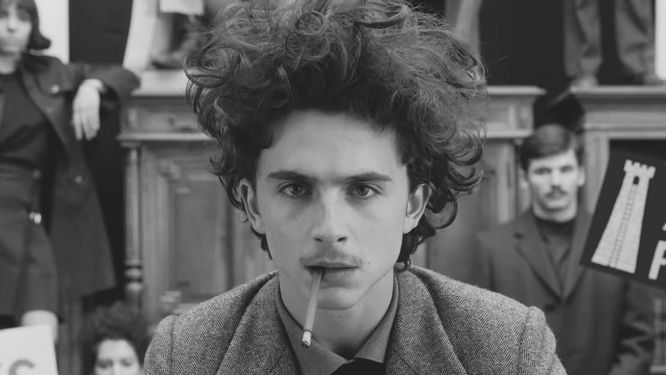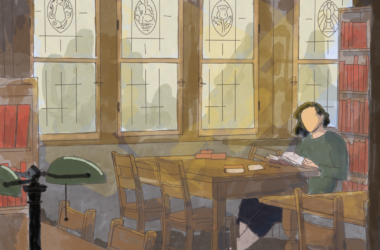Nearly three years after his last feature, beloved American filmmaker Wes Anderson is back with The French Dispatch. Premiering in Toronto and theUnited States on Oct. 22, the film was released in theatres across Canada on Oct. 28. Anderson described it as a “love letter to journalism,” and it is just that. Drawing upon the eccentric cinematic style and storytelling techniques that audiences have come to expect from the idiosyncratically comedic director, The French Dispatch is sure to be popular among Anderson fans, but risks losing casual viewers with its confusing plot and excessive stylization.
Set in the mid-20th-century French offices of an American travel journal, The French Dispatch is a collection of vignettes that comprise the articles featured in the titular magazine. The film follows a team of journalists—Lucinda Krementz (Frances McDormand), Roebuck Wright (Jeffrey Wright), and Herbsaint Sazerac (Owen Wilson)—as they pitch their stories to editor Arthur Howitzer, Jr. (Bill Murray). The articles explore each writer and their different journalistic subjects: An artist sentenced to life in prison, a student chess riot, and a kidnapping solved with the help of a chef.
The French Dispatch is ostensibly five different movies in one, as each article presented by each character creates a world of its own, allowing the audience to tap into a different side of the small fictional town of Ennui-sur-Blasé. This technique, although narratively interesting, quickly becomes confusing. With such complex smaller segments of the film—each of which could almost pass for its own feature film—the audience can easily forget the overarching narrative. The film requires that the audience do some work in uniting separately constructed worlds to piece together a continual narrative.
Frequent Wes Anderson collaborators Bill Murray, Frances McDormand, Owen Wilson, and Adrien Brody all appear once again in The French Dispatch, each delivering excellent performances. The best performance in the film comes from Moses Rosenthaler (Benicio Del Toro), who plays an imprisoned artist who is in love with Simone (Léa Seydoux), a prison security guard. Del Toro delivers the most entertaining and hilarious scenes of the film, despite limited dialogue.
A staple of Wes Anderson’s films is witty dialogue with deadpan delivery. The French Dispatch and its fictional French village provide the perfect canvas for this, as the characters in the utmost absurd stories behave with complete sincerity. The juxtaposition of these quiet journalists against larger-than-life characters strengthens the film’s comedic edge. The film’s rapid pacing and light tone is a saving grace for general audiences who might otherwise become confused by the film’s structure.
The French Dispatch continues in the same stylistic tradition as Wes Anderson’s previous work. With eccentric set pieces, perfectly symmetrical shots, and rigid colour palette, Anderson’s films instantly transport the viewer to another world. However, this intensely surreal cinematographic style may go too far, at times feeling nearly satirical in its execution. The world of the film is so perfectly symmetrical and vibrantly saturated that it almost feels as if it loses touch with reality, diverging from a hyper-styled version of real life into a fantasy that more closely resembles a dollhouse. This style can become frustrating.
The film is ultimately Wes Anderson’s style at its peak. With its geometrical cinematography, distinctive colour palettes, and eclectic 1950s fashion, The French Dispatch is sure to capture the aesthetic attention of fans of Anderson’s work. Although it isn’t without its flaws, The French Dispatch is a creative and dynamic piece of work that stands out amid 2021’s track record of films, and well worth a trip to the theatre.








